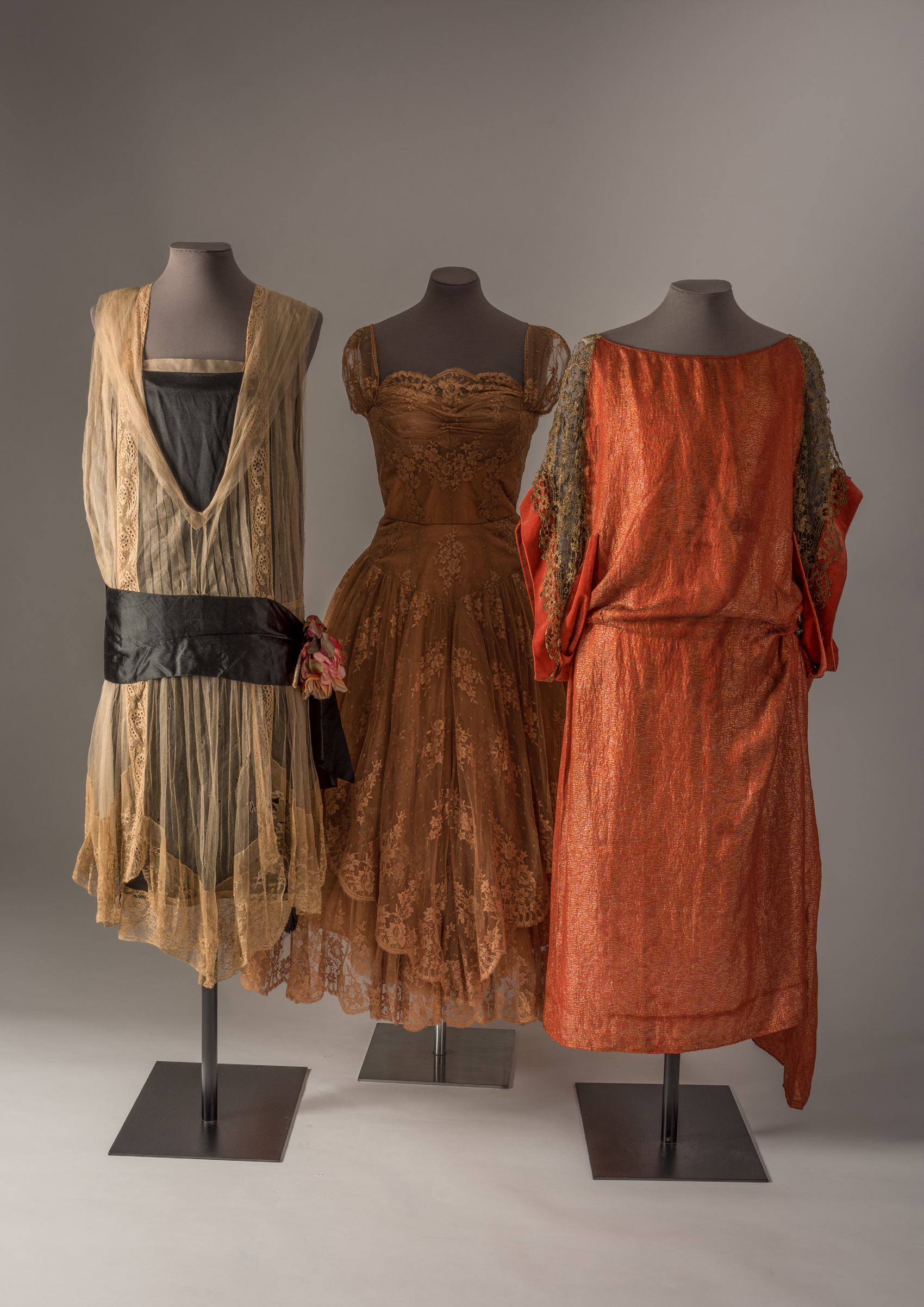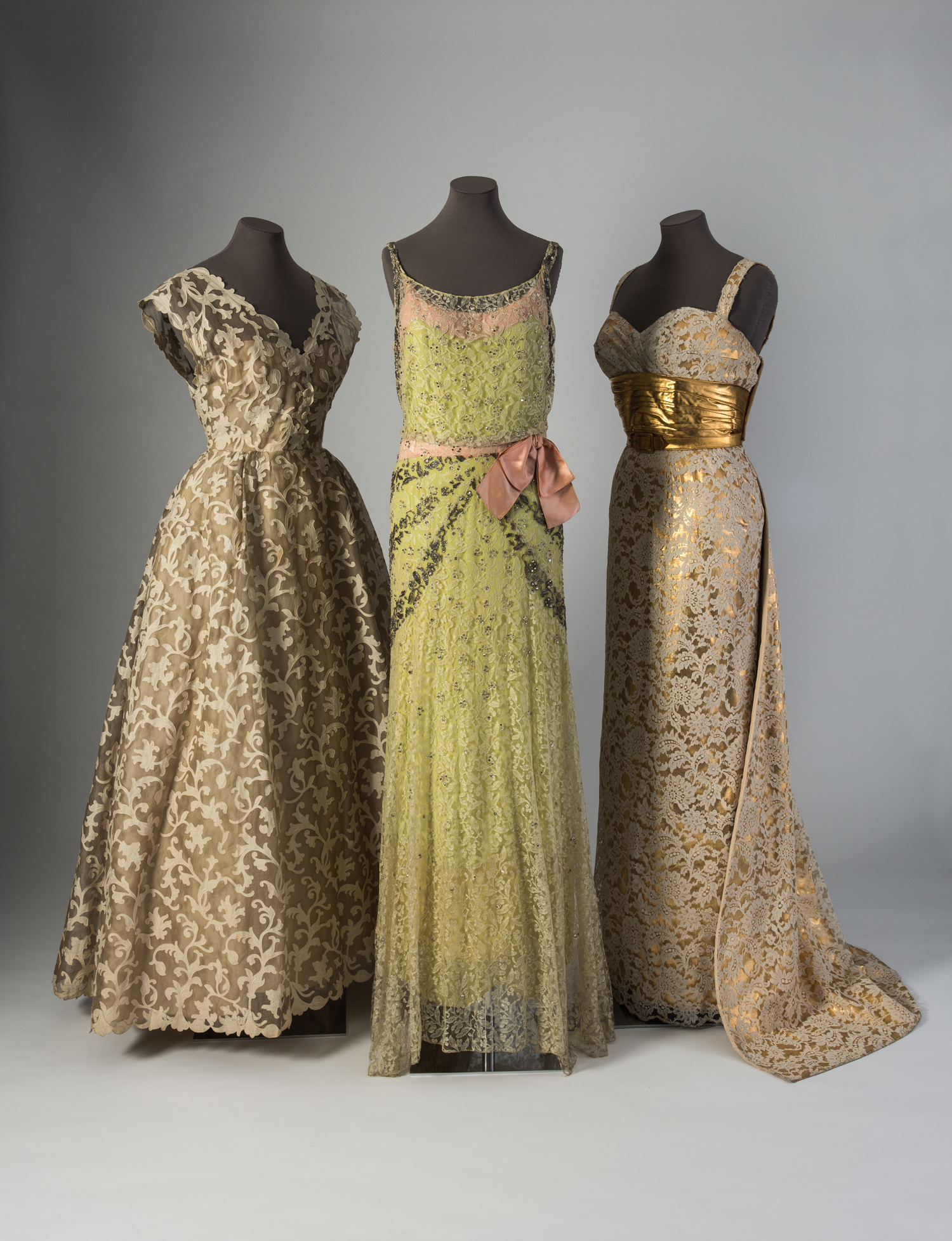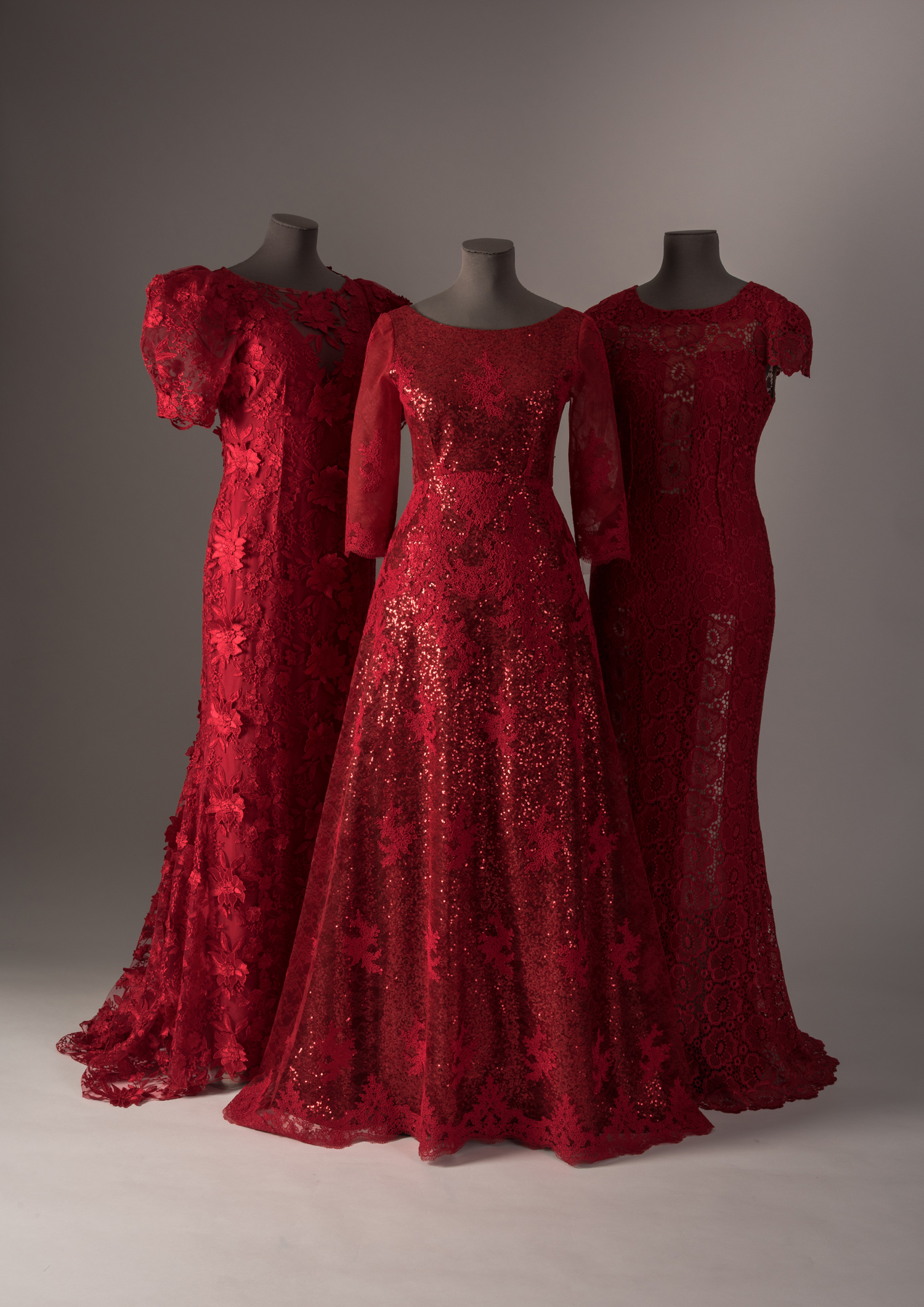Exhibition Review: Lace in Fashion
Fashion Museum Bath (February 4, 2017 - January 1, 2018)
Lace: the word alone evokes the image of an ethereal fabric, loaded with frilly and feminine connotations. Though lace appears everywhere from the doilies on a grandmother’s armchair to edgings on seductive lingerie, we don’t often stop to consider its history. Lace in Fashion at the Fashion Museum in Bath, traces the popularity of this gossamer textile from its origins as a painstaking handcraft to a modern, mechanized fabric seen all over the runways. As a modern lacemaker, I have spent the last five years studying the history and craft of handmade lace, and now run the Brooklyn Lace Guild, an organization devoted to preserving these skills. A large portion of our mission is to spread awareness of the breadth of lace history, and to keeping the tradition alive. Lace in Fashion serves as a valuable introduction to the importance of lace in fashion history, both through the exhibition itself and the various lacemaking courses offered in tandem by the museum.
Beginning in the late 15th century, lace was laboriously handmade and an indicator of social status, available only to the wealthiest elites. After centuries of fanatical popularity, the French Revolution literally took the heads of many who adorned their throats with lace, and its production dwindled. Further spelling the decline of handmade lace was the onset of the industrial revolution, out of which came the first lace machines in the early 19th century. Today, jacquard machine lace is prized for its exquisite detail, used mainly by couture houses. Last year, French fashion house Chanel actually purchased one of their lace suppliers, Sophie Hallette, a company that still uses the kind of early Leavers machines that are responsible for some of the ultra-fine lace on display in this exhibition. [1]
Nearly two centuries after the demise of the hand-lacemaking industry, the high-end machine lace industry has fallen on hard times as well. The New York Times recently covered the struggling Leavers lace industry in Calais, France, where sophisticated machine laces are unable to compete with cheaper production overseas. Far-right politician Marine Le Pen capitalized on the angst of the Calais lace workers [2] with her anti-globalization rhetoric during her campaign this year, but nationalist sentiments were not strong enough to win her the election. Today, swaths of cheaper chemical and knit laces are made in factories for big lingerie brands like Victoria’s Secret where fifteen technicians can be had for the same wages as one French artisan.
Though it cycles in and out of the forefront of fashion, lace never disappears from the lingerie and bridal industries, where it is a staple. However, Lace in Fashion does not focus on lace in these two contexts, instead it includes more fashion-forward pieces from various decades, revealing how lace has changed over time. Included in the range of pieces on display are everything from a silver 17th-century gown trimmed with a rare type of lace made from silk threads wrapped in parchment, to a contemporary dress designed by Christopher Kane, which is covered in lace appliqués adhered to organza with black polyurethane tape. Thanks to a grant from the British Arts Council, the museum was able to fund a two-year research project to document their extensive collection of lace, and train curatorial staff in lace identification and history. This exhibition is the pinnacle of their research project, meant to showcase exemplary pieces of the lace collection and educate viewers about lace history.
Held in a rectangular gallery entered through the museum’s main collection, the exhibition wraps around the room with garments displayed in large cases adhering to a loose chronological order. Each case has a title describing a theme such as the history of lacemaking techniques, but also royal and celebrity fashion, imitation techniques, and contemporary fashion. Peeking out from behind the mannequins are stacks of labeled archival boxes, hinting at the large quantity of lace in the museum’s collection that couldn’t be included in the exhibition. Hanging backdrops in each case feature a photograph of different pieces of lace from the archive, blown up to a massive scale to reveal their fine details. The overall effect is subtle, allowing the viewer to focus on the clothing while still adding visual interest.
Today, lace is strictly associated with womenswear, but in its early days, the frilly trimming was a unisex embellishment. Perhaps to emphasize this, Lace in Fashion opens and closes the exhibition with men’s garments. Entitled “Origins,” the first display case in the gallery features the exhibition’s oldest pieces, including a 16th-century men’s cream linen smock with narrow black lace edging identified as “Flemish plaited bobbin lace.” Though not as elaborate as the modern viewer might be used to seeing, this type of early lace was still complex and time-consuming to make and accessible only to the wealthy. To the European visitor, bobbin lace may be familiar thanks to the hobbies of a grandmother or great aunt, but in the US, it is not a well-known technique.
Bobbin lace evolved from a kind of braiding, and is worked on a pillow with numerous threads attached to bobbins, which are crossed and twisted in a pattern and secured with pins. A bolster-style pillow from the Auvergne region in France paired with English bobbins (distinct for their beaded spangles) is displayed in the same case as the chemise, with a brief description of the technique on the placard. This odd combination of regional tools, which would not historically be used together, is explained by the source of the pillow, which has been loaned by a contemporary lacemaker.
“Although fashion is unlikely to ever return to starched lace ruffs for everyday wear, there may be a little more lace in men’s future.”
In stark contrast to the modest linen smock, the final case in the exhibition features a Burberry suit constructed of ornate cream lace from their Spring/Summer 2016 menswear collection. Perhaps the designer Christopher Bailey, who is quoted as explaining that he used lace for its “poetry,” was ahead of his time in bringing back lace for men. After the male romper, or “RompHim” caused a sensation this spring, LA-based label Hologram City also subverted expectations of menswear by introducing a line of pastel lace shorts and button-ups, modeled by buff gentlemen with baseball hats and sneakers. [3] Although fashion is unlikely to ever return to starched lace ruffs for everyday wear, there may be a little more lace in men’s future.
The second case in the exhibition, entitled “Hand-made,” focuses on 19th-century laces during the transitional period of the industrial revolution. One of the few bridal pieces on display is a wedding veil of mixed techniques, wherein handmade Belgian Duchesse bobbin lace motifs were appliquéd to a ground of machine-made tulle. Additionally, the Victorian love of lace resulted in the recycling of collectable antique laces, which were often cut up and refashioned to suit the latest silhouettes. One black dress dating to the 1890s by the court designer Madame Osbourne includes covetable 17th-century Venetian Gros Point needle lace trim. Garments in the following case, “Towards machine-made lace” illustrate how craft techniques like crochet and tape lace emerged to produce lace quickly to compete with machine production. An incredible black lace cape, made in Bath for its first department store in the turn of the century, seamlessly mixes machine-made cotton Chantilly lace with handmade silk Chantilly, allowing the customer to save a few coins while still getting a piece of the real thing.
As the exhibition moves along to the 20th century cases “Every day” and “Evening wear,” nearly all of the lace has been made by machine. Shifting the focus from production to silhouette, these garments show how lace can be adapted to suit both casual day dresses and flashy evening wear. The ornamental textile is popular enough to have spawned copycat techniques as well, as illustrated in the “Imitations” case. Three midcentury dresses are embellished with embroidery, flocking, and appliqué techniques to mimic the effect of lace. With the advent of technology today, high-tech methods such as laser-cutting and 3D printing can also be used to produce designs with the negative space unique to lace.
Lace in Fashion succeeds in positioning lace as a valuable textile that has endured centuries in myriad styles, fibers, uses, and techniques. The way lace has been adapted to stay relevant in fashion across eras that were drastically different is demonstrated when comparing a 19th-century Irish crochet gown with a 1920s metallic flapper dress from the House of Paquin. Despite the small scale of the exhibition, it manages to include a wide variety of garments and serves as an introduction to changing methods of lace production.
Efforts like that of the Fashion Museum in Bath to document and study the lace in their collection, with the help of the local Lace Guild, show that lace has not yet ceased to capture public imagination with its magic. Lacemakers around the world, including myself, who still practice and teach the painstaking art, rejoice in the rare occasion of a fashion exhibition focusing on lace. However, even for those with no background or interest in the topic, Lace in Fashion is an exquisitely curated and frill-filled trip through fashion history, and educational to boot.
Notes
[1] Dana Thomas, “Ensuring a Future for Lace,” New York Times (December 7, 2016).
[2] Liz Alderman,“One a Lace Capital, Now Riven By Lace Politics,” New York Times (April 29, 2017).
[3] Trautwein, Catherine. “Over the RompHim? Try Pastel Men’s Lace Shorts”








